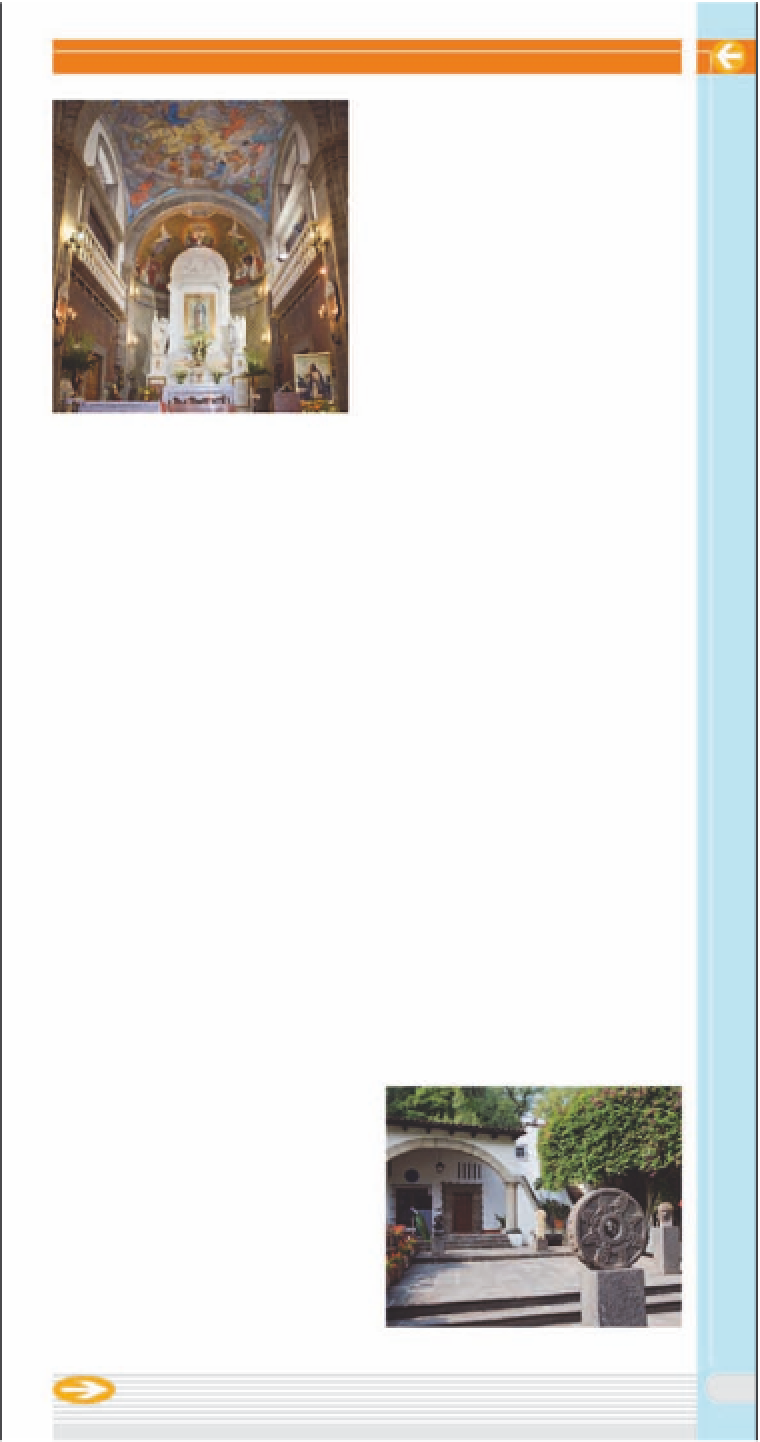Travel Reference
In-Depth Information
£
Tenayuca and Santa
Cecilia Acatitlán
These two ancient pyramids
located near each other in the
north of Mexico City make it
possible to visit both archeological
sites in a single taxi trip. The
oldest, Tenayuca was built in the
11th century before the Aztecs
arrived in the valley. The pyramid
was enlarged every 52 years, six
times in all, and twin staircases
lead to the temples on the top.
The second pyramid, Santa Cecilia
Acatitlán, dates from 1300-1521,
and was used to worship the sun
god Huitzilopochtli and the rain
god Tláloc. The temple at the top
of the pyramid has been carefully
and authentically reconstructed,
and visitors can climb the stair-
case to explore the building
(see p41)
.
$
Museo Dolores Olmedo
Capilla del Cerrito, Villa de Guadalupe
!
Villa de Guadalupe
Mexico's holiest Catholic
shrine is dedicated to Our Lady
of Guadalupe, the beautiful dark-
skinned image of the Virgin that
appeared to Juan Diego in 1531
and left an imprint of her image
on his cloak. The cloak is display-
ed in the Nueva Basílica. There
are numerous chapels, basilicas,
and holy sites here, each one
commemorating an aspect of this
holy site. The Basílica Antigua,
with its beautiful Baroque façade
and twin towers, housed the
image of Guadalupe from 1709
until the Nueva Basílica was con-
secrated in 1976
(see pp30-31)
.
@
Plaza de las Tres Culturas
Housed in the gracious 17th-
century Hacienda La Noria is the
largest private collection of easel
works by renowned Mexican
artists Diego Rivera and Frida
Kahlo. Philanthropist Dolores
Olmedo Patiño was Diego Riv-
era's friend, patron, and occas-
ional model, and she collected
145 of his works. The Frida Kahlo
collection includes 25 of her
works.
d
"W.ÏYJDP$PM-B/PSJB
9PDIJNJMDPt.BQ#t
tBNoQN5VFo4VOt"ENGSFF5VF
tXXXNVTFPEPMPSFTPMNFEPPSHNY
Tlatelolco was the site of the
largest Aztec commercial trading
center. The Spanish conquista-
dors destroyed the Aztec pal-
aces, temples, and ceremonial
center making way for the plaza
and the Church of Santiago.
Much of the ruins, including the
main pyramid with its twin
temples, have been excavated.
Modern buildings surround the
plaza, giving rise to the name
which means “plaza of three
cultures,” for the Aztec, colonial,
and modern era structures.
d
Eje
$FOUSBM3JDBSEP'MPSFT.BHØOt.BQ
#t3VJOTBNoQN5VFo4VOt"ENGSFF
Museo Dolores Olmedo
95
Dolores Olmedo Patiño donated her private art collections and
hacienda to Mexico upon her death in 2002

































